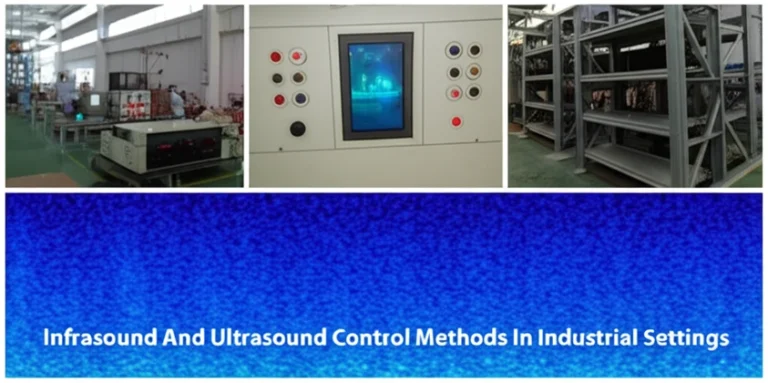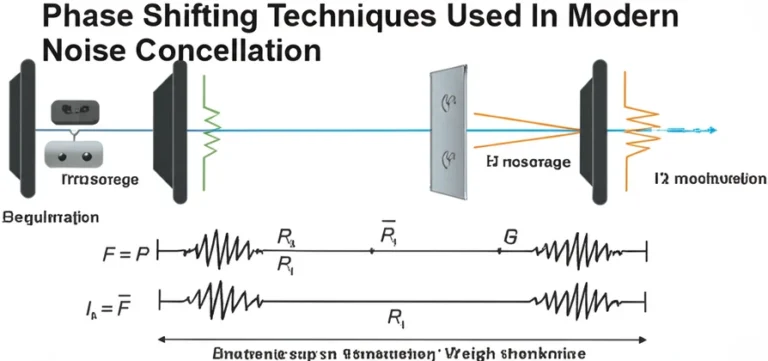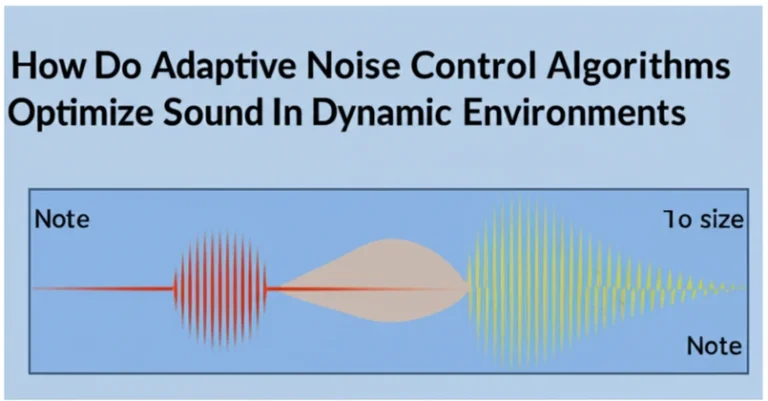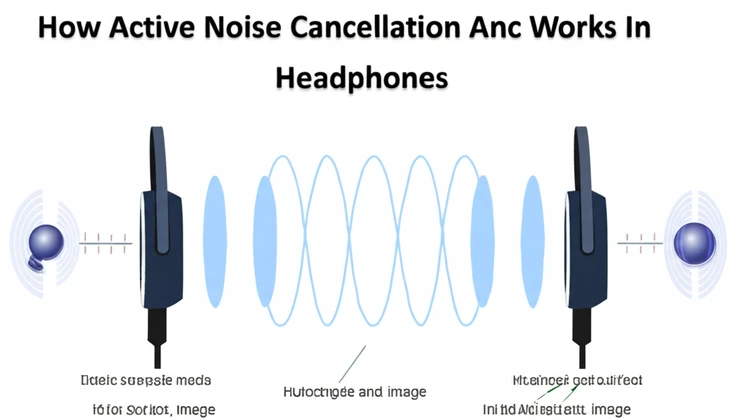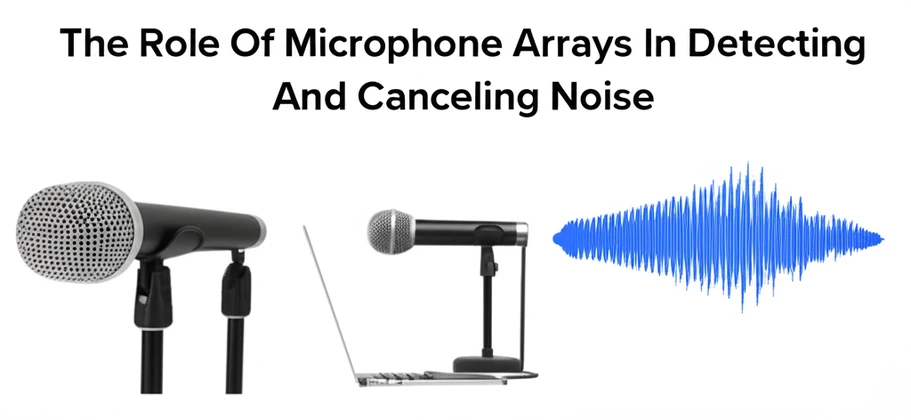
The ability to isolate and cancel unwanted sounds is crucial for communication, comfort, and safety in today’s increasingly noisy world. From the hustle of urban streets to the sophisticated interiors of conference rooms, effective noise control is paramount. Microphone arrays, leveraging the power of multiple microphones working in concert, offer a transformative solution for detecting and canceling noise in diverse environments.
This article explores the crucial role of microphone arrays in achieving precise and effective noise control, examining their functionality, diverse applications, and the exciting innovations shaping their future.
How Do Microphone Arrays Work?
Microphone arrays operate on the principle of using multiple microphones strategically positioned to capture and analyze sound waves. Advanced signal processing techniques are then employed to differentiate between desired sounds and unwanted noise. This is achieved through a combination of hardware and software components.
Key Components and Principles
The efficacy of a microphone array hinges on the careful arrangement and coordination of its components:
- Array Geometry: Microphones are arranged in specific patterns—linear, circular, planar, or spherical—each with its own strengths and weaknesses for different applications.
Linear arrays are common for simple directional noise cancellation, while circular arrays offer 360-degree coverage. The choice of geometry significantly impacts the array’s ability to focus on specific sound sources.
- Beamforming: This core technology utilizes algorithms to process the minute differences in phase and amplitude of sound waves arriving at each microphone. By analyzing these differences, the array can “steer” its listening focus towards a desired direction (forming a virtual “beam”) while suppressing noise from other directions.
Common beamforming algorithms include Delay-and-Sum, Minimum Variance Distortionless Response (MVDR), and Generalized Sidelobe Canceller (GSC). Each algorithm offers different performance characteristics in terms of noise reduction and robustness to environmental changes.
- Spatial Filtering: Complementing beamforming, spatial filtering algorithms further refine the noise reduction process by analyzing the spatial characteristics of the sound field. These filters can isolate specific frequencies originating from particular locations, enabling precise noise cancellation while preserving the desired audio signal.
- Adaptive Processing: In dynamic environments where noise sources and desired signals change over time, adaptive algorithms are crucial.
Adaptive beamforming and filtering techniques continuously adjust the array’s processing parameters to maintain optimal noise cancellation performance in real-time.
By combining these techniques, microphone arrays accurately locate and isolate target sound sources, effectively canceling surrounding noise through spatial filtering.
Applications of Microphone Arrays in Noise Detection and Cancellation
Consumer Electronics
Microphone arrays have become integral to many consumer devices, enhancing user experience in various ways:
- Noise-Canceling Headphones: These headphones utilize arrays to analyze the surrounding noise and generate anti-noise signals that effectively cancel out unwanted sounds, creating an immersive listening experience. Advanced models adapt to changing environments, offering consistent noise cancellation performance even on airplanes or busy streets
- Smart Assistants and Speakers: Devices like smart speakers and virtual assistants rely on microphone arrays to accurately capture voice commands even in noisy environments. The array’s ability to focus on the user’s voice while filtering out background noise is critical for accurate speech recognition.
- Video Conferencing Systems: High-quality video conferencing systems leverage microphone arrays to capture clear audio from all participants, minimizing distracting background noises and ensuring smooth communication.
Automotive Systems
In the automotive sector, microphone arrays play a vital role in improving both comfort and safety:
- Cabin Noise Reduction: Arrays can actively reduce road and engine noise within the vehicle cabin, creating a quieter and more comfortable driving experience.
- Hands-Free Communication and Voice Control: Arrays enable clear hands-free calling and accurate voice control of in-car systems, even with traffic noise and other distractions.
- Driver Assistance Systems: Microphone arrays can contribute to advanced driver-assistance systems (ADAS) by detecting and isolating critical sounds like emergency sirens or approaching vehicles, enhancing driver awareness and safety.
Public Spaces and Professional Audio
The application of microphone arrays extends to various public and professional environments:
- Conference Rooms and Auditoriums: Microphone arrays enhance audio clarity in meetings and presentations by focusing on speakers and minimizing ambient noise.
- Public Address Systems: In public spaces, arrays improve the intelligibility of announcements and emergency alerts.
- Sound Recording and Broadcasting: Microphone arrays enhance audio quality by capturing sounds from specific directions and minimizing unwanted background noise.
Industrial Applications
- Machinery Noise Monitoring and Reduction: Arrays can identify and locate sources of excessive noise in industrial settings, enabling targeted noise control measures to improve workplace safety and reduce environmental impact.
- Acoustic Surveillance and Security: Microphone arrays can be used for security applications, detecting and classifying specific sound patterns for intruder detection or monitoring equipment health.
Benefits of Using Microphone Arrays
Precision in Noise Detection and Source Localization
Microphone arrays excel at pinpointing sound sources using sophisticated signal processing algorithms, enabling highly accurate noise detection and identification of the direction of origin.
Adaptability and Versatility
Microphone arrays can be configured and adapted to various environments, from quiet offices to noisy industrial sites, demonstrating their versatility in different noise control applications.
Enhanced Audio Quality and Speech Intelligibility
By effectively suppressing background noise, microphone arrays drastically improve the clarity of captured audio, making them essential for applications like speech recognition, communication systems, and audio recording.
Innovations in Microphone Array Technology
Adaptive Beamforming and Noise Cancellation
Ongoing research is focused on developing more sophisticated adaptive algorithms that enable microphone arrays to dynamically adjust their performance in response to changing noise conditions and moving sound sources.
AI and Machine Learning Integration
The integration of artificial intelligence and machine learning allows microphone arrays to learn and recognize specific sound patterns, improving noise detection and cancellation accuracy over time.
This also enables advanced features like sound classification and source separation.
Miniaturization and Integration into Wearable Devices
Advances in microelectronics and MEMS technology are driving the miniaturization of microphone arrays, enabling their integration into increasingly smaller devices like hearables, wearables, and smartphones.
FAQ
What is a microphone array?
A microphone array is a system of multiple microphones working together to capture and analyze sound from multiple directions, enabling advanced noise cancellation and sound source localization.
How do microphone arrays cancel noise?
Microphone arrays utilize beamforming and spatial filtering techniques to isolate desired sounds and suppress unwanted noise from other directions. Beamforming focuses the array’s “listening” towards the desired source, while spatial filtering removes noise based on its spatial characteristics.
What are the typical applications of microphone arrays?
Microphone arrays are used in a wide range of applications, including noise-canceling headphones, smart assistants, automotive systems, conference rooms, public address systems, industrial noise control, and acoustic surveillance.
What are the advantages of using microphone arrays over single microphones?
Microphone arrays offer significant advantages over single microphones, particularly in noisy environments. They provide superior directionality, enabling them to focus on desired sounds while suppressing background noise more effectively.
They also enable sound source localization and can capture spatial audio information.
Conclusion
Microphone arrays play an increasingly critical role in detecting and canceling noise across a wide range of applications. Their ability to isolate desired sounds while effectively suppressing unwanted noise offers significant improvements in communication clarity, audio quality, and overall comfort in various environments. From personal devices to complex industrial systems, microphone arrays are becoming essential components for managing sound in our increasingly noisy world.
As research and development continue to advance areas like adaptive beamforming, AI integration, and miniaturization, the role of microphone arrays in shaping the future of audio technology is set to expand even further.


